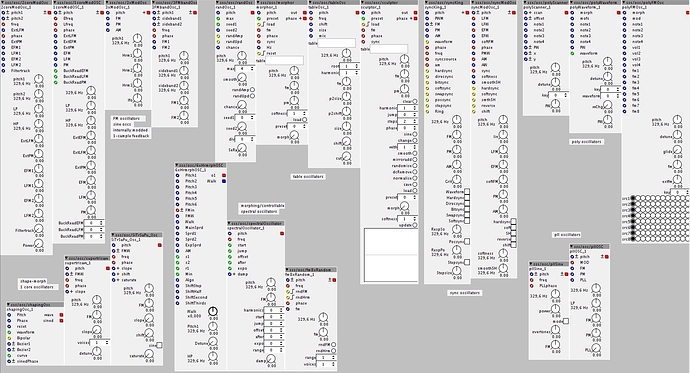NEW MODULE
DELAY
"MorphDel"
using an internal LFO, the module crossfades between 2 readout taps.
whenever a tap is out of the mix, it's readout tap gets updated to a new tap, controlled by the time input (use clock2timing and ratiomaxVCA modules to sync to host tempo)
Reverse delay is possible by clicking the buttons. As there are 2 taps, one can go normal, while the other reverses. The reverse version will click though, when passing the delay writer position.
As the LFO is smoothed by a filter, pretty high rates can be used without too much alliasing , though too-high rates will produce clicking as the crossfader signal won't be able to reach the max crossfading values and tap points will be heard switching positions.
Using a mixer to provide feedback and using a (quantized to host tempo) pattern to feed the delay-input, awesome rhythmic behavior can be made without clicks or altering the pitch of the incoming sound.
The reset input smoothly fades back the phase position of the LFO to phase zero in respect to the phase-position at the moment of reseting.





